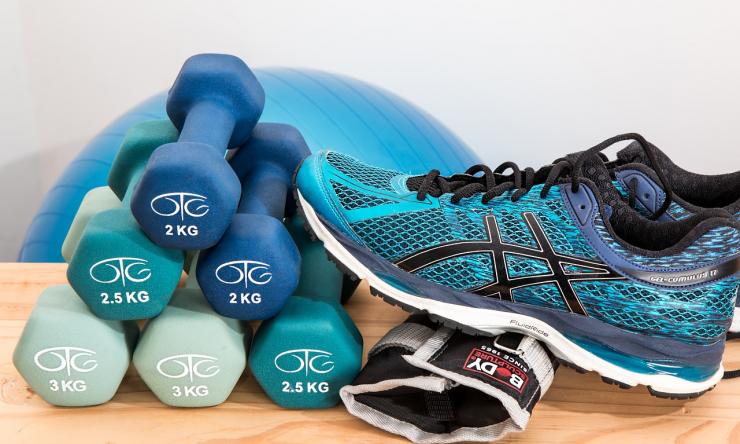Safely, slowly introduce new workout routines
Deciding to improve your health through physical fitness is a great resolution, but it’s important to ensure that you are doing so in a safe way. A sports medicine expert at Baylor College of Medicine offers tips on how to safely participate in new exercises in the new year.
“First, you should consider what your fitness level is and what a reasonable goal is,” said Dr. Theodore Shybut, assistant professor of orthopedic surgery at Baylor. “If you are someone who has been regularly active for a while and you are looking to change your routine, that is one thing. But if you are someone who has not exercised in several years or more and you are trying to pick up a new activity, you should start carefully and increase intensity gradually.”
Shybut notes that exercise is medicine and improving fitness has many benefits, even for people with chronic heart or lung conditions. However, if you have health issues, always check with your physician before beginning a new exercise.
“Physical fitness is the one intervention that can alleviate stress, reduce blood pressure, increase your heart health parameters, lower cholesterol and increase overall well-being,” he said. “But if you haven’t been exercising, trying to run an ultra-marathon or doing Olympic style lifts to the point of exhaustion – the intensity of these exercises is probably not going to be sustainable and may lead to injury, and that will definitely interfere with reaching those fitness goals.”
Shybut suggests talking to friends who have tried these types of activities or consulting with a professional athletic trainer who can design something for you. A group class should be geared toward your level of exercise or fitness, not with people who have been training at a much higher fitness level.
Exercises with a higher risk for injury in untrained individuals are those that involve explosive plyometric movements – those in which the muscles have to go from a very shortened position to a very long position and then to a very shortened position again –for example, squat jumps. These types of exercises can cause strains in the hamstring or quadriceps. With any workout that involves a lot of agility, such as cutting, pivoting or repetitive landing from jumps, if you’re not well conditioned there is a greater chance that you won’t plant or land in the right position, which can cause serious injury. Lifting heavy free weights overhead can be risky if you have never done this type of workout.
Shybut suggests that you assess what your level of fitness is and start with a light weight or a repetition that is easy to get a sense of the mechanics of it as well as the balance and form it requires. He also suggests having a knowledgeable partner or trainer coach you through it.
If you are coming off of an injury, Shybut says to focus on rehab from the injury before you focus on return to play. Often a course of physical therapy can transition you to a good home rehabilitation program that you can continue as you get back into workouts.
“Sometimes I see athletes try to push through repetitive stress injuries, which tends to aggravate the problem,” he said. “It’s important to modify activities to allow the injury to heal, rehabilitate properly to get strong, then resume participation when you are healthy again.”
If there are any questions about the severity of the injury, have it checked out by a sports medicine specialist. If you have a joint that feels unstable, has painful popping, has severe swelling, or is extremely tight or locks, it’s important to visit a sports medicine physician.
There are some injuries that can be treated non-operatively and require rest and physical therapy programs. More severe injuries often need surgery to get the best result.
“If you try to work through a severe injury your own, it can actually make it worse,” said Shybut. “As an athlete, a key principle is to listen to what your body is telling you - if your knee or shoulder is telling you it can’t go, come in and get it evaluated - that’s the first step in getting over the injury and back to activity.”











